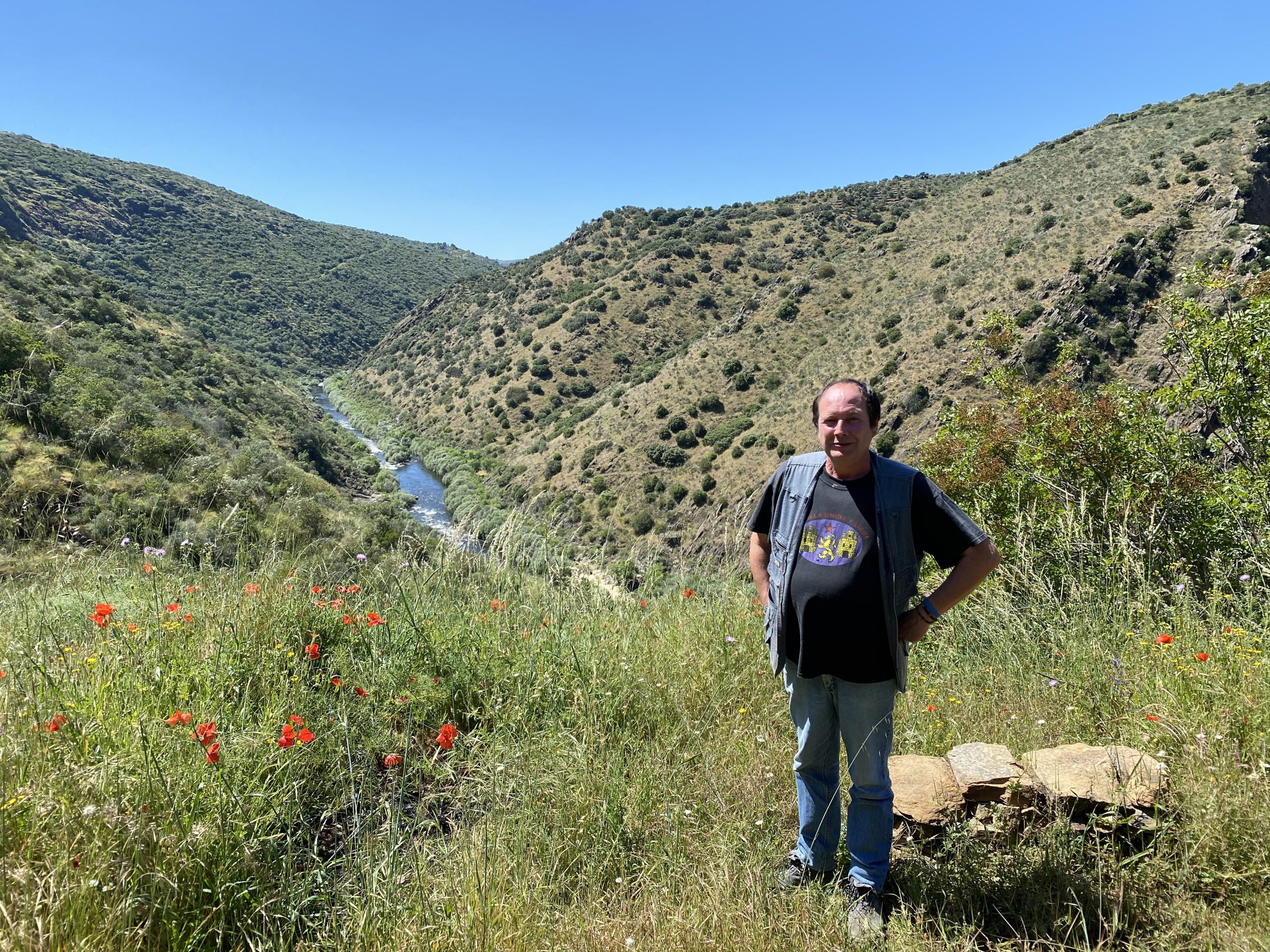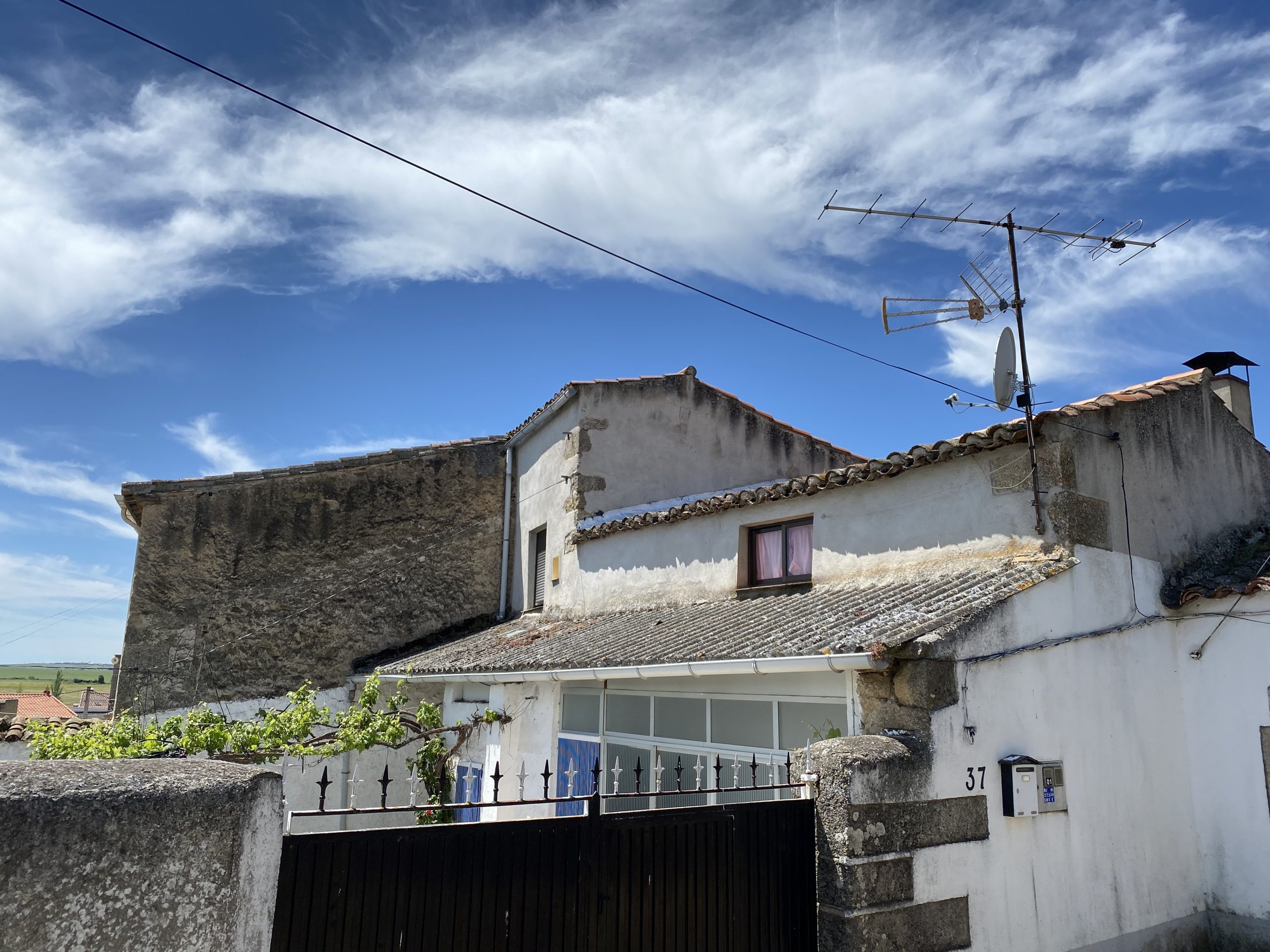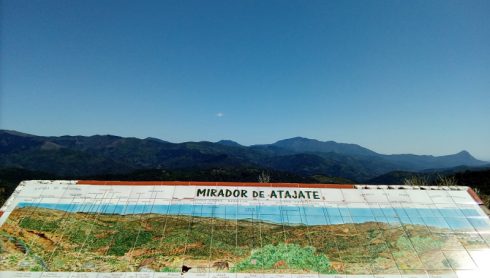“She just got led astray,” insists her mother, while her father is the picture of sadness
THE village of Puerto Seguro is one of Spain’s most isolated mountain redoubts – an obscure corner of heavily depopulated Salamanca province hugging Portugal’s border some four hours from Madrid.
The isolated pueblo is embedded in rugged Arribes del Duero Natural Park, a 110,000 hectare wildlife reserve celebrated for its golden eagles, black storks, wild boar and deer.
It is also tiger territory. For it is here that Spain’s most evil female murderer – Idoia Lopez Riano, better known as ‘La Tigresa’ (the Tigress) – first learnt to stalk her prey.
Now internationally infamous as the inspiration for the BBC’s hit drama Killing Eve, the former ETA terrorist with striking green eyes is said to be an occasional return visitor to these parts, with her parents having recently re-settled here away from the Basque Country, where she was politicised.
They live in nearby Villar de Ciervo – appropriately meaning Deer Town – where the Tigress would hang out as a teenager at summer ferias, wearing short skirts and flirting with the local boys.
This was the so-called ‘movida’ of the late 1970s, a time of excess in Spain, where the extreme claustrophobia of a dictatorship quickly moved to a liberal society in the space of a few years, following dictator General Franco’s death in 1975.
While she would often become the life of the party and ‘one of the girls’ hanging around in a mini gang every summer, things suddenly ended when at the age of 16 in 1980, she met a boyfriend back home in Errenteria, near San Sebastian, and stopped coming ‘home’.
Within four years she had joined the Basque independence group ETA and seen off her first victim, a French businessman.

By the time she was finally jailed in 2003, she had murdered at least 23 people and earned a chilling reputation as a psychopath who would pause to admire her reflection before executing her next victim.
Little wonder then that Idoia, now 56, became the inspiration for Villanelle, the alluring but psychopathic contract killer portrayed by Jodie Comer in the hit BBC drama Killing Eve.
Luke Jennings, whose novels form the basis of the TV drama, read about Idoia in Spanish newspapers in the 1980s, when her face would regularly appear on wanted posters in police stations and other public places. ‘She was clearly a psychopath and completely, completely without empathy,’ he recently recalled.
But while Villanelle has displayed no remorse for her extravagantly sadistic ‘hits’, Idoia has renounced her crimes and is seeking to build a new life.
Having been controversially released from prison in 2017, the Olive Press can reveal she firstly moved to Andorra, where her sister lives, before setting up home in Barcelona, having learned Catalan – among other languages – while in prison.
Even more amazingly, her mother Mari – speaking for the first time – claims she is ‘happy’ and working for the Red Cross, although in what capacity she declined to reveal.
Talking outside her simple cottage up an alleyway in the heart of the village, she told the Olive Press her daughter had been ‘turning things around’ since her release.
Animated and friendly, she continues: “She speaks three or four languages now and is throwing herself into the work. Idoia is with the Red Cross in Barcelona. She is very happy and everyone loves her there.’

While declining to say exactly what the job is – or whether she has a boyfriend and children – she adds: “No, she has no children yet, but she is turning things around. I’m proud of her.”
The contrast between her supposedly new humanitarian work and role as a commando with ETA, whose violent campaign left more than 850 people dead, is as different as day from night; as was her role as assassin when compared to her idyllic childhood.
With piercing eyes and dark hair tumbling over her shoulders, Idoia was ‘just one of the girls’ in Puerto Seguro, according to her cousin Jose Antonio Lopez whose family also moved for decades to the Basque Region.
She would come and stay in one of the various family homes in the village in summer and other times of year.
“I remember Idoia as normal, a fun girl, who tended to mix with the older kids,” he recalls. “She would flirt with the boys and tease them… but she was pretty soft and fun and nice. I just don’t understand what went wrong up there in the Basque region.”
Yet he has his theories and, by his own admittance, the family was politicised.
He explains how their grandfather was a working man, left wing but cultured. He learnt to read, which was not normal back in his day; he would put on theatre nights at their farmhouse on the edge of the village in summer; and he would read his grandchildren stories and sing songs.
“Yes, we were Republicans, but we were not radical and we did not support the extreme violent tactics of the likes of ETA despite all of us living up there in the Basque Region for most of the year.”

Now living in the village, where he works as an ad-hoc tour guide at the ethnological museum, he goes on to give an intriguing insight into the divides that still last to this day.
He tells me about the lists of ‘rojos’ (reds) put together before and after the Civil War – ‘people to keep an eye on’. Many were executed or had to escape.
“One of my uncles, a teacher like my father, was killed for being left wing.”
Another villager, 62-year-old Teodoro Reyes, takes up the theme.
He confirmed that Idoia’s grandfather Froilan was known as ‘Froilan the rojo’ (the red) and his son Melchor, a carpenter by trade, always carried a torch for the socialists.
“The whole family are left wing, always have been, always will be,” insists the farmer, adding that it was a tragic tale ‘that still isn’t over’.
Like so many problems in Spain, its roots stretch back to the troubled 1920s and 30s and the bloody civil war that swept ambitious army general Francisco Franco to power and an ensuing 40-year dictatorship.
“Froilan being a supporter of the defeated republic and had to flee as the civil war swept through the area,” explains Reyes, a local farmer. “He would have been killed, like thousands of others… summarily executed, for sure.”
LEGACY OF VIOLENCE
Idoia was eventually released after condemning ETA’S campaign of violence and was promptly expelled.
As part of her punishment, Riano’s name was scrubbed from the roll call of 700 prisoners, denying her family the offer of financial support from the group. Shunned by fellow inmates, the one time pin-up terrorist no longer gazed down from posters on the walls of bars across the Basque country.
Riano also agreed to join a ‘programme of reconciliation’ in which victims meet ETA prisoners and in 2016 made a public plea for forgiveness.
In a letter to judges at Spain’s national court, she wrote: ‘I committed an immense, terrible and awful error to believe that I should be a member of ETA. It is an irreparable error I feel every time I breathe.’
ETA disbanded in 2018, ending a five-decade campaign. In an open letter, it wrote that ‘years of confrontation have left deep wounds and we have to give them the chance to heal. Some are still bleeding, because the suffering is not in the past.’
Being a rugged mountain region, just a few miles from the Portuguese border, it wouldn’t have been hard for him to get away or return, which he did some years later, ending up with a wife, Adela from the neighbouring village, and four children: two boys, Melchor, the eldest, and two sisters.
While today one of Spain’s classic rural delights – protected as a UNESCO biosphere reserve, and with its own ‘Parque Natural’ status – it was a tough existence for the working classes who had to eke out a living on the poor rocky soils that dominate the area.
So it was almost inevitable that in the late 1950s, the children ended up leaving, with Melchor choosing to proffer his services in the rapidly growing industrial region inland from San Sebastian. A skilled carpenter, he had no problem finding work in the dormitory town of Errenteria, which saw tens of thousands of poor southern Spanish residents locate for work.
It was here he met his future wife Mari, a quirky Extremenan girl from nearby Badajoz, with piercing blue eyes and a classic joie de vivre.
She was also an emigree from a humble background. The pair married andbought a decent apartment in the bustling town, some 10 miles from the emblematic tourist resort of San Sebastian.
But they were about as far removed from the affluent, upper class residents of the celebrated Basque seaside resort as could be, and maintained their working class roots and zeal.
It is perhaps not surprising then that Idoia, with a sense of injustice like her parents, somehow got into a radical, rebellious crowd and went on to commit crimes in the name of independence.
“Either way, it created an unhealable rift in our family,” continues cousin Jose Antonio. “My father really struggled with having a niece who killed so many people.”

As her mother sees it, her 16-year-old impressionable daughter was simply led astray, first by an older boyfriend, and then by ETA.
“Up there in the Basque region was a certain time in history,” she insists, shrugging her shoulders at her front gate. “She simply got involved with the wrong crowd. I can’t say why, it just happened.”
It has clearly hit a raw nerve and she doesn’t want to elaborate further. Giving the excuse that she has to make lunch, she adds: “I really don’t want to go into that and my husband is adamant he will not talk to anyone. He wants to have a peaceful and happy life and doesn’t like to think of that part of our history.”
But that part is now well documented. Displaying a natural talent for terror, Idoia rapidly became a lieutenant in ETA’s infamous Madrid cell.
In 1986 she played a key role in the bombing of the city’s Plaza Republica Dominicana which killed 12 Civil Guards, and in another car bomb attack in Madrid in 1992 that left five soldiers dead.
After fleeing to Algeria for several years, she joined the notorious ‘Ekaitz’ commando which carried out bombings in Alicante, Murcia and Valencia.
By then, she had achieved a near mythical reputation for ruthlessness both in ETA’s ranks and among the Spanish police pursuing her.
And, just as Villanelle lusts after her MI6 pursuer Eve Polastri, so the Tigress developed a sexual obsession with the Civil Guards.

She would cruise bars and discotheques to pick up cops for one-night-stands and then, after extracting info through pillow talk, calmly fire bullets into others the next day.
When officers finally tracked her down to a flat in the south of France in 1994, she was arrested carrying a Browning 9mm handgun with the serial numbers erased and false identity papers.
Finally extradited and brought to trial, she was given a 2,000 year prison term in 2001 – later reduced to 23 years, one for each of her confirmed victims.
Even in prison, she caused heartache and problems, first when she married fellow ETA terrorist Juan Ramón Rojo in May 2004, and later when she divorced him and married another terrorist, Joseba Arizmendi. It is not known if they are still together.
The image of his daughter as an evil, bed-hopping murderer remains understandably painful for Melchor Riano, now 86.
Sipping a glass of Patxaran, a typical Basque drink, in the village square of Villar de Ciervo, he cuts a lonely figure. With sad eyes, he insisted: “I just want to leave the past behind, let bygones be bygones. I just can’t bring myself to talk about it. I’m sure you can understand.”
Just 10 miles away in the smaller village of Alameda de Gardon, there is much greater sadness. For it was here that one of her victims, military captain Juan Antonio Nunez, lived with his wife and young family.
The soldier was blown up by a car bomb in Plaza de la Cruz Verde, in Madrid, in 1992, along with four others.

While his widow and her children have now moved to Madrid, a former neighbour remembers the outrage well.
“We were all devastated. He was a lovely man and his widow never got over it. It was such a tragedy,” he said.
A few more miles away in Monasterio, Badajoz, where Mari’s mother comes from, I meet Juan Luis Lopez Lancharro, 56, who is also finding it hard to heal the scars of the past.
The painter and decorator insists its ‘extremely hard’ to forgive her for the role she played in the murder of his then 21-year-old brother Antonio Lancharro, one of those killed in the 1986 massacre.
“To let her out after just 23 years was shocking. In America or England they would stay in prison for life for that – and deserve it. Here, getting out after 23 years, it’s embarrassing,’ he tells the Olive Press.
Pointing to his brother’s framed medals which have pride of place on the wall of the family home, he adds: “For my mother to have to see her son buried and die at such a young age destroyed her. She never got over it.
“And to think that, as a child, ‘La Tigresa’ was so close by and even probably walked these streets is chilling. I hope she never gets a good night’s sleep again.
“I don’t believe in the death sentence but I do believe in perpetual life sentences which means that you spend the rest of your life in prison.
“Of course that’s not going to bring Antonio back and that’s why we remind us ourselves of him every day. We will never forget the tragedy of losing him.”
Click here to read more La Cultura News from The Olive Press.








